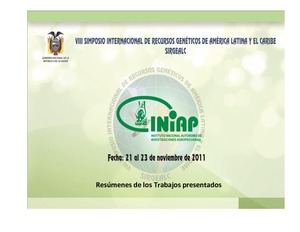L'Impact de la crise economique sur les populations, les migrations et le couvert forestier du Sud-Cameroun
Cette etude a ete realisee en 1997-98 par le CIFOR en collaboration avec les institutions et les chercheurs camerounais, grace a l'appui financier du DFID du Royaume-Uni. Son objectif general est de compendre les causes qui expliqueraient le taux de deforestation beaucoup plus elevependantla crise economique (qui commenca en 1986) par rapport a ala periode avant le debut de la crise. Le project de recherche a examine les effects de la crise sur les migrations, les systemes de cultures, la division sexuelle du travail et leur incidence sur le couvert forestier.
Livestock and deforestation in Central America in the 1980s and 1990s: a policy perspective
This study analyses seven factors used to explain the conversion of forest to pasture in Central America between 1979 and 1994: 1) favourable markets for livestock products; 2) subsidised credit and road construction; 3) land-tenure policies; 4) limited technological change in livestock production; 5) policies which reduce timber values; 6) reduced levels of political violence; and 7) characteristics specific to cattle which make conversion attractive. Deforestation rates in Central America declined in the 1980s, but remained high.
Manual praktek mengelola hutan dan lahan: suatu kombinasi pengetahuan tradisional masyarakat Dayak Kenyah dengan ilmu-ilmu kehutanan dan pertanian
This simple manual is intended for general guidelines on traditional methods in managing natural resources. It is based on the indigenous/traditional knowledge of people of Dayak Kenyah Uma' Jalan society, East Kutai, Kalimantan, Indonesia. Local traditional knowledge is one of the important components to utilise and conserve the natural resources. This manual shows how to prepare the land for planting food crops, community forest management procedures and fire prevention.
Luz de America: comunidad y biodiversidad Amazonica
Problems with governance of forests are closely linked to incompatible interests between different stakeholders. Having a clearer understanding of the relative importance of forest landscape functions among stakeholders can bring much clarity about why governance problems persist. The voice of the weakest actors is often insufficiently heard in decision-making processes that affect how stakeholders can use forests.
MAPFORGEN: Compartir conocimiento para conservar nuestra diversidad genetica forestal
Making sustainability work for complex forests: towards adaptive forest yield regulation
Criteria and indicators (C&I) have been worldwide accepted as a way to conceptualize and measure sustainability of forest management. Various C&I sets or standards were formulated by different organizations and processes such as ITTO, CIFOR, FSC, ATO and Montréal Process. These standards, particularly in the production aspect, underline the sustained forest yield principle and the importance of using permanent sample plot data to regulate forest yield.
Managing forest resources in a decentralized environment: lessons learnt from the Malinau research forest, East Kalimantan, Indonesia
Managing forests and improving the livelihoods of forest-dependent people: reflections on CIFOR’s social science research in relation to its mandate for generalisable strategic research
CIFOR has been actively engaged in field research in Indonesia focussing particularly on the role of forests and forest products in generating sustainable livelihoods for local users. Issues such as incentives and institutional structures for equitable and sustainable management systems have been highlighted in this research, which has been undertaken with the active co-operation of local NGOs.


